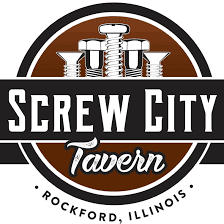Screw City
Screw City is an engaging tabletop game that blends dexterity, strategy, and a touch of humor in a novel package. Unlike traditional board games that rely on cards or dice, Screw City challenges players to physically manipulate oversized screws on a wooden board, aiming to score points through skillful tosses and calculated risks. Marketed as a game of “risk and chance,” it offers a refreshing departure from screen-based entertainment, fostering lively social interactions. This article explores the origins, mechanics, appeal, and cultural significance of Screw City, shedding light on why it stands out in the world of tabletop gaming.

Origins and Development
Screw City is a rebranded version of All Screw’d Up, a game produced by Channel Craft, a Pennsylvania-based company known for crafting high-quality, American-made toys and games since 1983. While the exact release date of Screw City is not widely documented, its predecessor, All Screw’d Up, has been available on platforms like Amazon, where it’s praised for its unique concept and solid craftsmanship. Channel Craft’s focus on durable, aesthetically pleasing products is evident in Screw City, which features a beautifully crafted wooden board and heavy-duty zinc bolts, designed to withstand repeated play.
The game draws inspiration from dexterity-based games like cornhole or darts, where physical skill influences outcomes, but it incorporates a strategic layer reminiscent of classic gambling games. Its industrial theme—centered around tossing screws—adds a quirky charm, making it a conversation starter at gatherings. Screw City reflects Channel Craft’s mission to create “Authentic American Pastimes” that combine nostalgia with innovative gameplay, appealing to players seeking tactile, hands-on experiences.
How Screw City Works
Screw City is designed for two or more players, making it ideal for small groups or larger parties. The game includes a solid wooden board, typically rectangular with a smooth surface, and four large zinc bolts (though some customer reviews note occasional missing pieces, such as receiving only three bolts). The objective is to reach exactly 21 points by tossing bolts onto the board, aiming for them to land “threads up” to score. The game’s rules blend chance with decision-making, creating a dynamic experience.
Each player takes turns tossing the bolts, one at a time, from a set distance (often determined by house rules, typically a few feet). If a bolt lands threads up, it earns points based on its position or a predetermined scoring system (e.g., 1 point for landing on the board, 3 points for threads up). After each toss, players face a choice: continue throwing to accumulate more points, risking their turn’s score, or “bank” their points and pass the bolts to the next player. Landing on 21 exactly wins the round, but exceeding 21 results in being “Screw’d Over,” resetting the player’s score to zero for that round.
The game’s dexterity element requires a steady hand and precise aim, as the heavy bolts can skid or topple if tossed carelessly. Strategic decisions add depth: players must weigh the risk of losing points against the reward of pushing closer to 21. House rules often emerge, such as adjusting scoring for different board zones or incorporating penalties for bolts that fall off. The compact board and simple components make Screw City portable, perfect for tailgates, family gatherings, or casual game nights.
Why Screw City Appeals
Screw City captivates players with its unique blend of physical skill and strategic choice. The tactile act of tossing bolts offers a satisfying contrast to digital games, appealing to those craving hands-on entertainment. Its industrial aesthetic—complete with shiny zinc bolts—adds a playful, almost whimsical charm, making it a standout on any game table. The game’s accessibility ensures that players of all ages and skill levels can join in, from children practicing their aim to adults plotting their next move.
The social aspect of Screw City is a major draw. The game sparks laughter and friendly banter as players cheer successful tosses or groan at near-misses. Its quick rounds—often lasting 10–20 minutes—keep the pace lively, while the risk-reward mechanic creates moments of tension and excitement. Unlike complex strategy games, Screw City requires minimal setup and explanation, making it ideal for impromptu gatherings or as an icebreaker at parties.
The game’s replayability stems from its reliance on player skill and luck. No two tosses are identical, and the board’s surface can lead to unpredictable outcomes, keeping players engaged. Its durability, thanks to Channel Craft’s craftsmanship, ensures it withstands frequent use, though some players have reported issues with incomplete sets, suggesting quality control could be improved.
Educational and Cognitive Benefits
While primarily a party game, Screw City offers subtle cognitive and physical benefits. The dexterity required to toss bolts hones hand-eye coordination and fine motor skills, particularly for younger players. The strategic element encourages risk assessment and decision-making, as players must decide whether to push their luck or secure their points. For children, the game can introduce basic math concepts through scorekeeping, while adults may appreciate the mental challenge of balancing caution and ambition.
In educational settings, Screw City can serve as a team-building activity, fostering collaboration and communication. Teachers or youth group leaders might use it to teach concepts like probability or spatial awareness, as players learn to predict bolt trajectories. The game’s lighthearted nature also promotes social skills, encouraging players to engage in friendly competition and gracious sportsmanship.
Cultural Impact and Community
Screw City has carved a niche in the tabletop gaming community, particularly among fans of dexterity games. Online reviews, such as those on Amazon, highlight its appeal as a “great tabletop, conversation game,” with players appreciating its unique mechanics and sturdy design. However, some criticism, like missing components, suggests Channel Craft could refine its packaging process.
The game’s community is small but enthusiastic, with players sharing tips and house rules on platforms like Reddit or BoardGameGeek. Its presence in game stores and online marketplaces underscores its appeal as a quirky gift or party staple. Screw City also taps into the broader trend of retro-inspired games, appealing to nostalgia-driven players who value craftsmanship and simplicity.

Conclusion
Screw City is a delightful fusion of dexterity, strategy, and humor, offering a fresh take on tabletop gaming. Its tactile gameplay, accessible rules, and social appeal make it a versatile addition to any game night, from family gatherings to casual hangouts. While minor quality issues occasionally arise, its sturdy construction and unique concept ensure lasting enjoyment. As players toss bolts and chase the elusive 21, Screw City proves that sometimes, the simplest games spark the most fun. Whether you’re a seasoned gamer or a curious newcomer, this quirky tabletop gem is worth a spin.